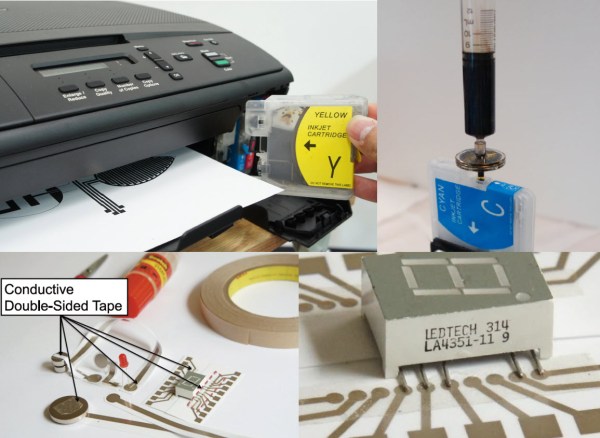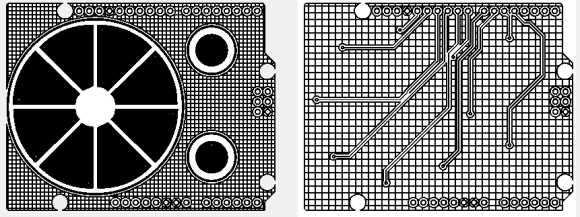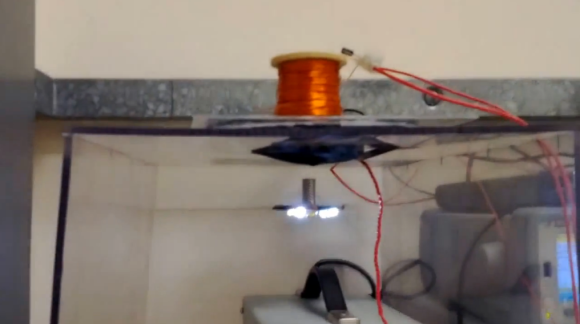Researchers at the University of Tokyo, Georgia Tech and a team from Microsoft Research have developed a low-cost method of printing circuits using an ordinary inkjet printer using a technique called Instant Inkjet Circuits.
The hack is quite literally as simple as injecting a refillable printer cartridge with a commercially available Silver Nano-particle Ink. This allows the printing of circuits onto many different flexible substrates including paper, transparent film, or basically anything you can fit in the printer. Typically if the medium is designed for printing it will work. Some exceptions to this include canvas cloth, magnetic sheets, and transfer sheets.
The researchers chose a Brother inkjet printer because they typically have nozzles that eject higher volumes of ink than other printers. The exact model they used was the Brother DCP-J140w. To maximize ink deposition, all cartridges are filled with the ink, and printed using photo mode where the C M and Y cartridges are simultaneously used to create black. No special software is required to print.
The full article is well worth the read and shows many examples of the different applications this could be used for — including instant prototyping using nothing but scotch tape.
If anyone can source some of this ink and try it out we would love to hear from you! Those that can’t may want to give the old inkjet/laser toner etch resist trick a try.
[via Power Electronics]

















